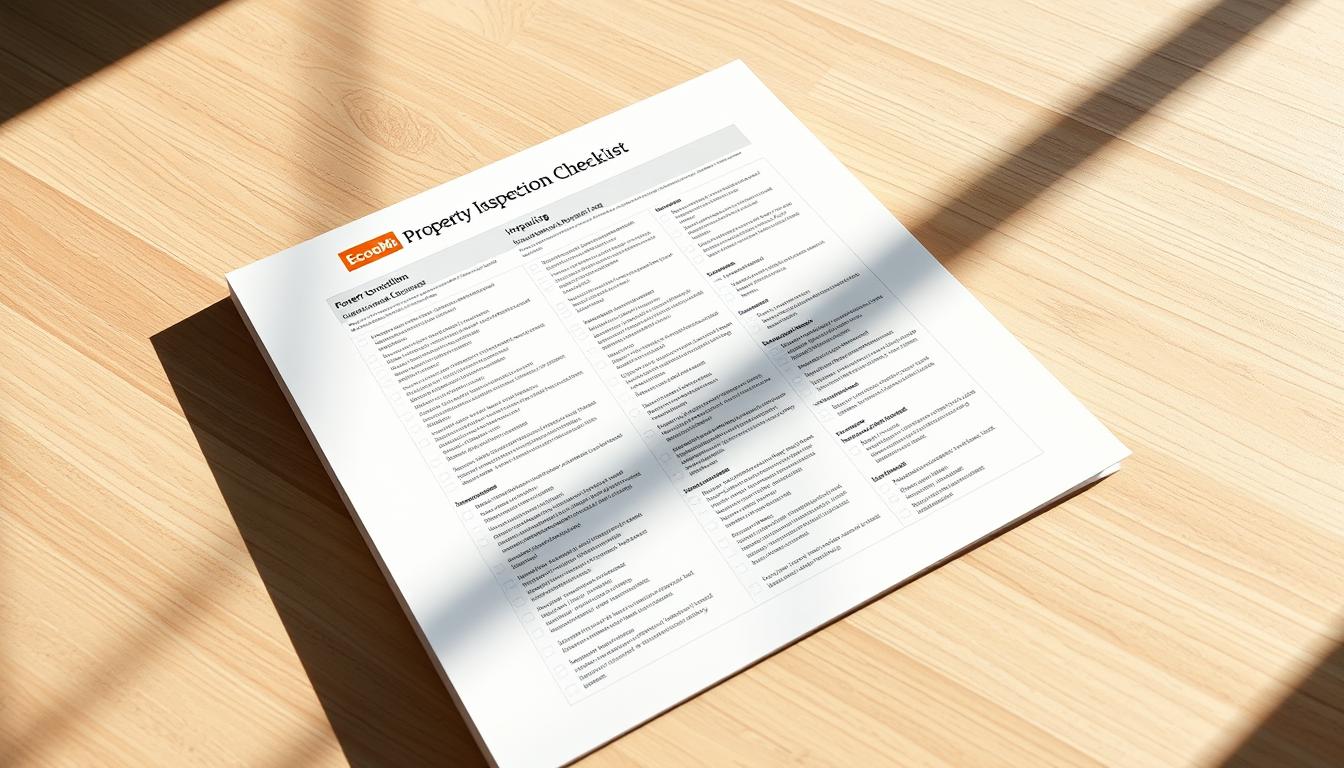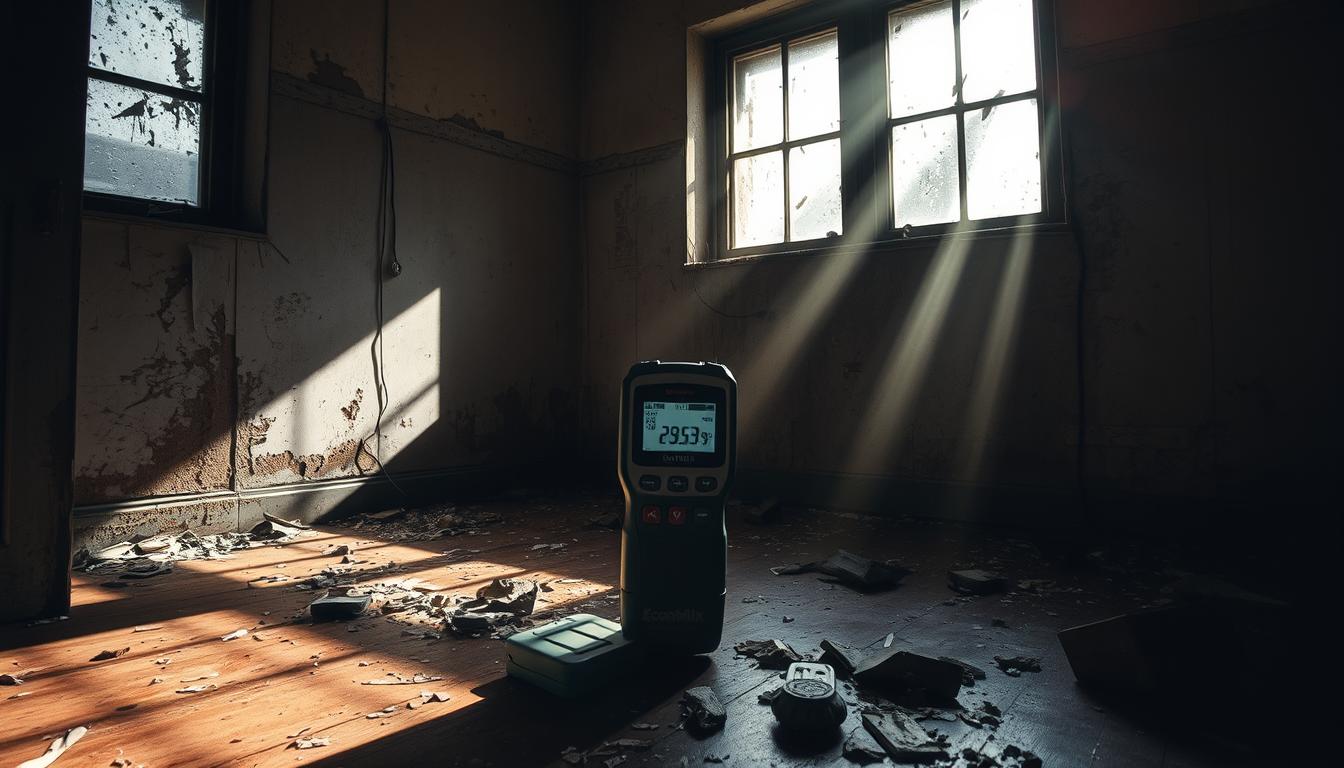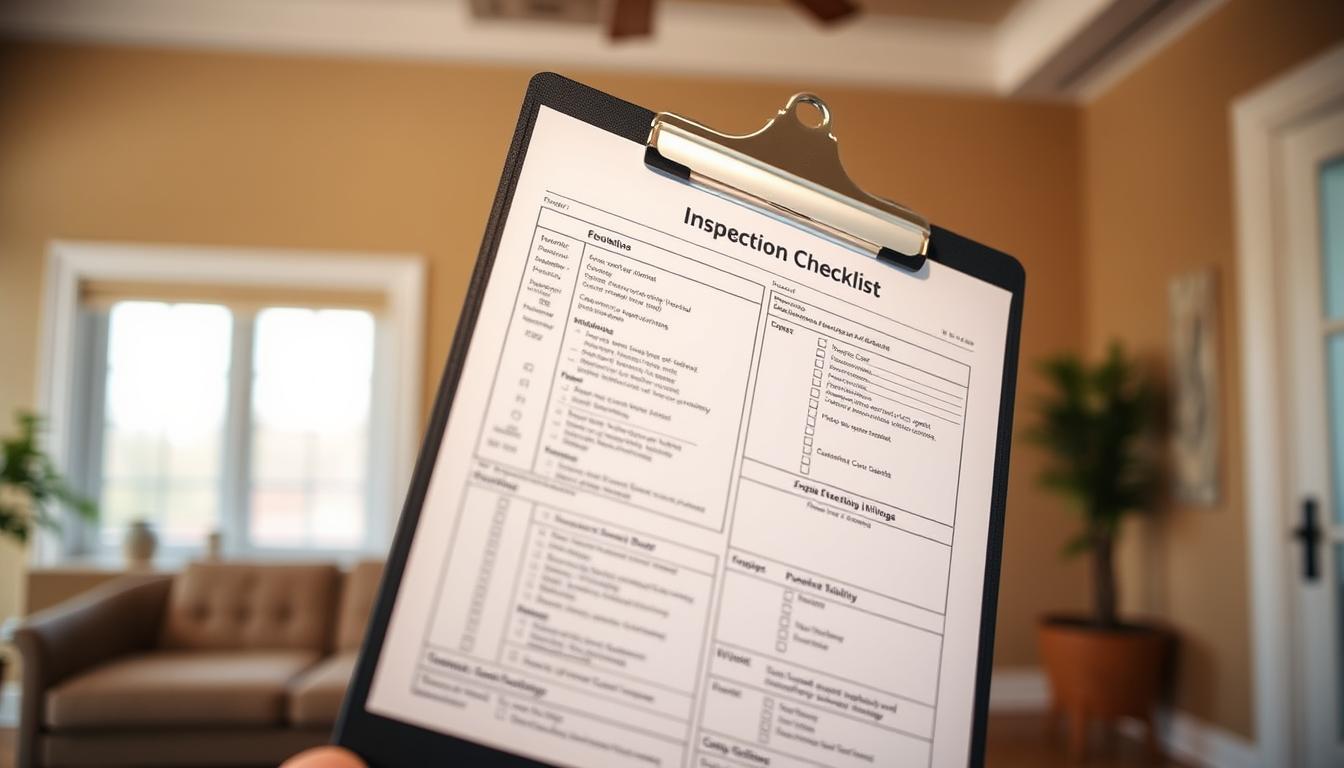Imagine buying a home or rental unit that seems perfect—until cracks in the foundation or faulty wiring drain your savings. Could you spot these risks before signing the contract? Overlooked defects in properties have cost investors millions over the years, even sinking long-term wealth goals.
Seasoned buyers often face surprises like mold behind walls or outdated electrical systems. During the 2008 crisis, for example, many rushed into deals without proper checks, leading to costly repairs later. Impeccable due diligence isn’t optional—it’s your shield against financial disaster.
This guide reveals critical red flags to watch for during inspections. You’ll learn how to identify issues that evade casual glances, from zoning violations to hidden water damage. Your financial stability hangs in the balance—don’t skip the steps that separate savvy investors from those who lose it all.
Key Takeaways
- Undetected property defects can erase years of investment gains
- Thorough inspections prevent 80% of post-purchase financial surprises
- Structural issues often hide behind fresh paint or cosmetic upgrades
- Local permit histories reveal risks most sellers won’t mention
- Professional assessments pay for themselves by avoiding six-figure repairs
Understanding Hidden Flaws in Real Estate Investment
Purchasing property without uncovering its secrets can jeopardize your financial future. Structural weaknesses or outdated systems often lurk beneath polished surfaces, waiting to drain your resources. One investor in Phoenix discovered this after buying a “renovated” condo—only to find corroded pipes masked by new drywall, costing $28,000 in repairs.
What Hidden Flaws Mean for Your Investment
Hidden flaws refer to defects intentionally concealed or overlooked during sales processes. These issues—like improper wiring behind walls or unpermitted additions—directly threaten your returns. A 2022 study showed 43% of flipped homes had safety violations disguised by cosmetic upgrades.
Every property contains vulnerable areas. Attics might hide mold colonies. Crawl spaces could conceal foundation cracks. Sellers sometimes paint over water stains or patch roofs temporarily. Without scrutiny, you inherit liabilities that erode profits.
Why Proper Inspection is Critical
Thorough assessments protect your rights as a buyer. Licensed inspectors test systems sellers can’t legally disable, like electrical panels or HVAC units. They also document issues you can use to renegotiate prices or demand repairs.
Professional evaluations often pay for themselves: A $500 inspection once saved a client $14,000 in unpermitted basement renovation costs. Experts check areas you might miss, from chimney stability to sewer line integrity. This vigilance safeguards your wealth and prevents costly surprises.
The most dangerous hidden flaws in real estate investment and how to detect them
Walking through a property feels exciting—until you notice warped floorboards near the bathroom. Savvy buyers know fresh paint often masks deeper issues. Last year, a Chicago couple avoided $19k in repairs by spotting mismatched drywall textures during their walkthrough.
Key Red Flags During a Property Visit
Watch for these warning signs:
| Red Flag | Detection Strategy | Risk Level |
|---|---|---|
| Uneven door frames | Place marble on floors | Structural |
| Musty odors | Check attic insulation | Mold/Health |
| Recent caulk around pipes | Request plumbing records | Water Damage |
Peel back area rugs. Look for staining under sinks. Sellers often hide evidence of leaks with quick fixes. One investor found black mold behind a bathroom mirror advertised as “move-in ready.”
Strategies to Verify Seller Claims
Cross-check these details immediately:
- Compare listed square footage with tax records
- Photograph HVAC model numbers for age verification
- Test every light switch and outlet during visits
Act today: Schedule inspections within your option period. A $300 sewer scope recently revealed root intrusions in a Dallas duplex, saving the buyer $8,200. Your investment’s success hinges on catching these issues before closing.
Inspecting Property Condition: From Interior to Exterior
What if gleaming kitchen counters distract from rotting roof beams? Sellers often prioritize visible upgrades while neglecting structural essentials. A polished interior might mask exterior decay—a tactic seen even in luxury markets. Financial Samurai documented a Newport Beach home where marble floors hid cracked foundation walls, costing the buyer $41,000 post-purchase.

Identifying Discrepancies Between Indoor and Outdoor Maintenance
Compare these elements during walkthroughs:
| Interior Focus | Exterior Risks |
|---|---|
| Fresh paint/wallpaper | Peeling exterior paint |
| New appliances | Outdated roofing materials |
| Refinished floors | Sagging gutters/downspouts |
During the 2008 financial crisis, 29% of foreclosed homes had mismatched maintenance levels. Inspect landscaping drainage—pooling water near foundations often indicates grading issues.
Spotting Signs of Concealed Damage
Use infrared cameras to detect moisture behind walls. Check attic insulation for uneven settling, which suggests past leaks. One Wall Street Journal report revealed 18% of Manhattan condos had undisclosed water damage beneath luxury finishes.
Act now: Hire inspectors who test exterior siding with moisture meters. A $200 thermal imaging scan recently exposed hidden termite damage in a Charleston estate, saving the buyer $12,700. When buying property, assume nothing—verify everything.
Evaluating Ownership History and Market Trends
A property’s past can haunt your future returns if ignored. In competitive markets like San Francisco, a condo sold three times in two years recently exposed undisclosed plumbing issues. Ownership patterns often reveal what sellers omit.

Rapid turnover frequently signals unresolved problems. A 2023 study found homes resold within 18 months in New York had 63% more code violations than long-term holdings. Always cross-check sales history against county records and permit databases.
Checking Sales Records and Rapid Turnover
Your due diligence should include these steps:
- Compare listing dates with transfer histories
- Verify renovation permits match claimed upgrades
- Analyze neighborhood sales trends for distress signals
One Brooklyn townhouse showed five owners since 2018. Investigators discovered unpermitted basement conversions affecting structural integrity. Markets with volatile pricing—like those struggling to meet needs of growing populations—often hide rushed flip jobs.
Case in point: A Bay Area duplex traded hands four times in three years. Each sale omitted mentions of faulty wiring later requiring $21,000 in repairs. Track ownership chains like detective work—it pays dividends.
Water Damage and Mold: Uncovering Concealed Risks

What if the walls around you are silently threatening your family’s health? Water damage and mold create invisible hazards that erode property value and well-being. A Florida condo owner learned this when fresh paint concealed toxic black mold, triggering a $34,000 remediation crisis after purchase.
Recognizing Early Signs of Water Damage
Look for these clues during walkthroughs:
| Visible Sign | Detection Method |
|---|---|
| Bubbling paint/wallpaper | Press areas for softness |
| Warped baseboards | Check with level tool |
| White mineral deposits | Use moisture meter |
Musty odors often indicate hidden mold colonies. Inspect under sinks and behind appliances—a Texas family found rotted subflooring beneath new tiles using this method.
Understanding Health and Financial Impacts
Prolonged mold exposure causes respiratory issues and allergies. Government studies show 24% of asthma cases in damp homes link to mold spores. Financially, unresolved water damage slashes estate values by up to 15% in crisis markets.
Act now: Demand inspection reports showing moisture levels in walls. A Seattle buyer avoided $17,000 in repairs by verifying government records of past flood claims. Protect your homeownership journey—what you can’t see can still bankrupt you.
Structural Warning Signs and Foundation Issues
Foundation problems cost U.S. homeowners $4.6 billion annually, yet many buyers overlook critical red flags during walkthroughs. Uneven floors or hairline cracks often signal deeper structural threats that impact entire neighborhoods. Communities with aging infrastructure see 38% more foundation claims than newer developments.
Detecting Cracks and Uneven Floors
Conduct these tests during property visits:
| Test | Tool Needed | What It Reveals |
|---|---|---|
| Marble Roll | Glass marble | Slope severity |
| Wall Inspection | Flashlight | Diagonal crack patterns |
| Door Check | Level tool | Frame alignment issues |
A Houston family avoided purchasing a sinking home by placing marbles on floors—they rolled toward a cracked basement wall. Look for stair-step cracks in brickwork or gaps around window frames, which suggest shifting foundations.
Understanding the Importance of Foundation Inspections
Professional inspectors use laser levels to measure slope variations undetectable to the eye. Just 2 inches of foundation settlement can render doors inoperable and crack plumbing lines. In flood-prone areas, water erosion often weakens support beams—a key concern for coastal communities.
One buyer in New Orleans discovered concealed termite damage during a foundation assessment, renegotiating their offer by $18,000. Always review repair histories and ask neighbors about recurring issues. Well-maintained homes preserve community property values and safety standards.
Overcoming Deceptive Repair and Renovation Practices
Renovations can transform a property, but some upgrades disguise critical flaws. A 2022 investigation found 1 in 5 flipped homes in Las Vegas used unlicensed contractors, leaving behind fire hazards and code violations. These shortcuts often pass casual inspection but crumble under scrutiny.
Verifying Permits and Authentic Repair Work
Always cross-check renovation claims with local building departments. A Miami condo owner avoided $11,000 in electrical rewiring costs by confirming permit numbers matched the seller’s “upgraded wiring” claims. Follow this three-step verification process:
| Document to Request | What It Reveals | Red Flags |
|---|---|---|
| Permit Records | Legality of renovations | Missing permits for major work |
| 3R Reports | Roof/repair history | Undocumented structural fixes |
| Contractor Licenses | Work quality assurance | Expired or mismatched licenses |
Community forums often reveal patterns. Check neighborhood groups for complaints about specific developers’ work rates or material quality. One Austin buyer discovered recurring plumbing issues in a builder’s projects through local social media threads.
Beware of Quick Fixes That Hide Bigger Problems
New caulk around pipes or fresh drywall patches often mask unresolved leaks. A flipped Denver ranch house had pristine floors covering rotted joists—a $9,200 repair uncovered during inspection. Use these detection strategies:
- Shine flashlight parallel to walls to reveal uneven textures
- Tap tiles with coin to detect hollow spots signaling poor adhesion
- Review utility bills for spikes indicating hidden system failures
Demand original repair invoices: Photocopied documents without contractor letterheads often signal fabricated work histories. Your vigilance preserves both property value and community safety standards.
Advanced Inspection Techniques to Detect Hidden Flaws
Modern property inspections now blend tech tools with expert analysis to expose risks invisible to untrained eyes. Recent growth in diagnostic technology allows buyers to identify issues like micro-cracks or moisture pockets before they escalate. A 2023 National Association of Realtors study found 68% of post-purchase disputes stemmed from defects detectable with advanced methods.
Using Tools and Tests During Open Houses
Arm yourself with these devices during walkthroughs:
- Thermal cameras: Detect temperature shifts signaling insulation gaps or water intrusion
- Laser levels: Measure floor slopes indicating foundation shifts
- Moisture meters: Identify dampness behind tiles or drywall
During open houses, perform these quick checks:
- Scan walls with a flashlight to reveal uneven textures from past repairs
- Place a marble on floors to test for slanting
- Inspect ceiling corners for bubbling paint—a sign of roof leaks
Consulting with Professional Inspectors
Certified inspectors play a critical role in assessing properties. They use boroscopes to view inside walls and gas detectors to find HVAC leaks. One Florida buyer avoided $15,000 in electrical repairs after an inspector found aluminum wiring disguised as copper.
Combine your findings: Share photos and notes with inspectors to focus their assessment. When you begin investing in property, this dual approach ensures no defect goes unnoticed. Environmental factors like humidity levels or soil composition often require professional interpretation—don’t gamble on DIY evaluations.
Understanding the Impact on Health and Financial Stability
What if your dream home secretly makes you sick? Hidden defects like mold growth or faulty wiring create dual threats—eroding your well-being while draining your savings. A 2023 Atlanta case study showed families in poorly maintained houses faced 27% higher medical bills due to respiratory issues.
Health Risks Associated with Poor Property Maintenance
Undetected mold spores trigger allergies and asthma attacks. CDC reports link prolonged exposure to 34% increased risk of chronic bronchitis. In one Ohio house, black mold behind bathroom tiles caused recurring sinus infections requiring $4,200 in treatments.
| Health Symptom | Common Causes | Average Treatment Cost |
|---|---|---|
| Persistent cough | Mold spores | $980/year |
| Skin rashes | Lead paint dust | $1,500 |
| Migraines | Carbon monoxide leaks | Emergency room visit: $3,250 |
Long-Term Financial Consequences of Hidden Defects
Ignoring small leaks or cracks today often leads to five-figure repairs tomorrow. Insurance companies increase premiums by up to 20% for properties with documented maintenance problems. A neglected roof leak in a Texas development ballooned from $800 patching to $14,000 in structural repairs within two years.
Financial domino effect:
- Resale values drop 12-18% for homes with unresolved defects
- Failed inspections delay sales by 47 days on average
- Tenant lawsuits over health hazards cost landlords $6,300 per case
Proactive maintenance preserves both your health equity and property value. Schedule annual HVAC checks and moisture assessments—your future self will thank you.
Mitigating Hidden Flaws and Protecting Your Investment
Smart buyers turn inspection reports into financial shields—here’s how you can too. A San Diego homeowner recently saved $22,000 by demanding sewer line video evidence before closing. This approach transforms risks into negotiation power.
Due Diligence and Research Strategies
Follow this three-step verification process:
| Step | Action | Outcome |
|---|---|---|
| 1. Permit Audit | Cross-check renovations with city records | Exposes unapproved structural changes |
| 2. Utility Analysis | Review 12-month energy/water bills | Reveals hidden system inefficiencies |
| 3. Foundation Review | Hire specialist for slab/stem wall assessment | Identifies $10k+ repair needs early |
One Atlanta investor avoided costly foundation repairs by comparing original blueprints with current layouts. Always request maintenance logs—missing records often signal neglected upkeep.
Leveraging Inspection Findings in Negotiations
Use documented defects to reshape deals. When a Portland couple found outdated wiring, they secured:
- 3% price reduction ($8,400 savings)
- Seller-funded electrical upgrade ($6,200 value)
- 1-year warranty on HVAC repairs
Key move: Present repair estimates during counteroffers. A Chicago buyer reduced their offer by $15k after proving roof replacement costs through contractor bids. Your research becomes leverage—don’t settle without using it.
Lessons from Real-World Property Inspections and Case Studies
What separates thriving investors from those facing endless repair bills? Real inspection failures in competitive markets reveal patterns every buyer should study. In San Francisco, a $1.2 million condo deal collapsed when thermal imaging exposed water damage behind marble showers—undetected during three prior showings.
Insights from San Francisco and New York Markets
New York’s fast-paced market hides risks beneath polished surfaces. A Brooklyn brownstone passed visual checks until sewer scoping revealed $18k in pipe repairs. Sellers had masked drainage issues with monthly chemical treatments. Compare these regional challenges:
| Market | Common Issue | Detection Strategy |
|---|---|---|
| San Francisco | Earthquake retrofitting gaps | Review seismic upgrade permits |
| New York | Illegal basement conversions | Cross-check square footage |
Liquidity crunches hit hardest when repairs surprise owners. One investor nearly lost their dream loft after foundation cracks demanded immediate $25k fixes—funds tied up in other ventures.
What Failed Inspections Can Teach You
Every botched assessment offers data to refine your process. Key lessons from recent cases:
- Demand 360-degree sewer line videos before closing
- Test GFCI outlets in kitchens/bathrooms during walkthroughs
- Verify window replacement dates through city permits
Work smarter: A Manhattan buyer renegotiated their offer by 7% after proving roof repairs violated building codes. Failed inspections aren’t dead ends—they’re negotiation leverage waiting to be unlocked.
Conclusion
Your next property could be a wealth-building asset—or a financial trap disguised by curb appeal. Structural weaknesses, water damage, and fraudulent repair histories demand more than surface-level checks. Case studies from San Francisco to New York prove vigilance separates profitable deals from money pits.
Robust evidence gathered through inspections—like thermal imaging scans or permit audits—becomes your negotiation superpower. Making sense of these findings helps avoid costly surprises, whether it’s mold behind walls or unapproved renovations. Remember: 68% of post-purchase disputes stem from defects a thorough review could’ve exposed.
Invest time upfront. Schedule sewer scopes. Verify contractor licenses. As widespread occupancy fraud reshapes markets, your due diligence protects against risks even sellers might not disclose.
Act now. Apply these strategies before your next offer. Future you will thank present you for turning inspection reports into financial armor. Your portfolio’s stability depends on what you uncover before signing—not after.














